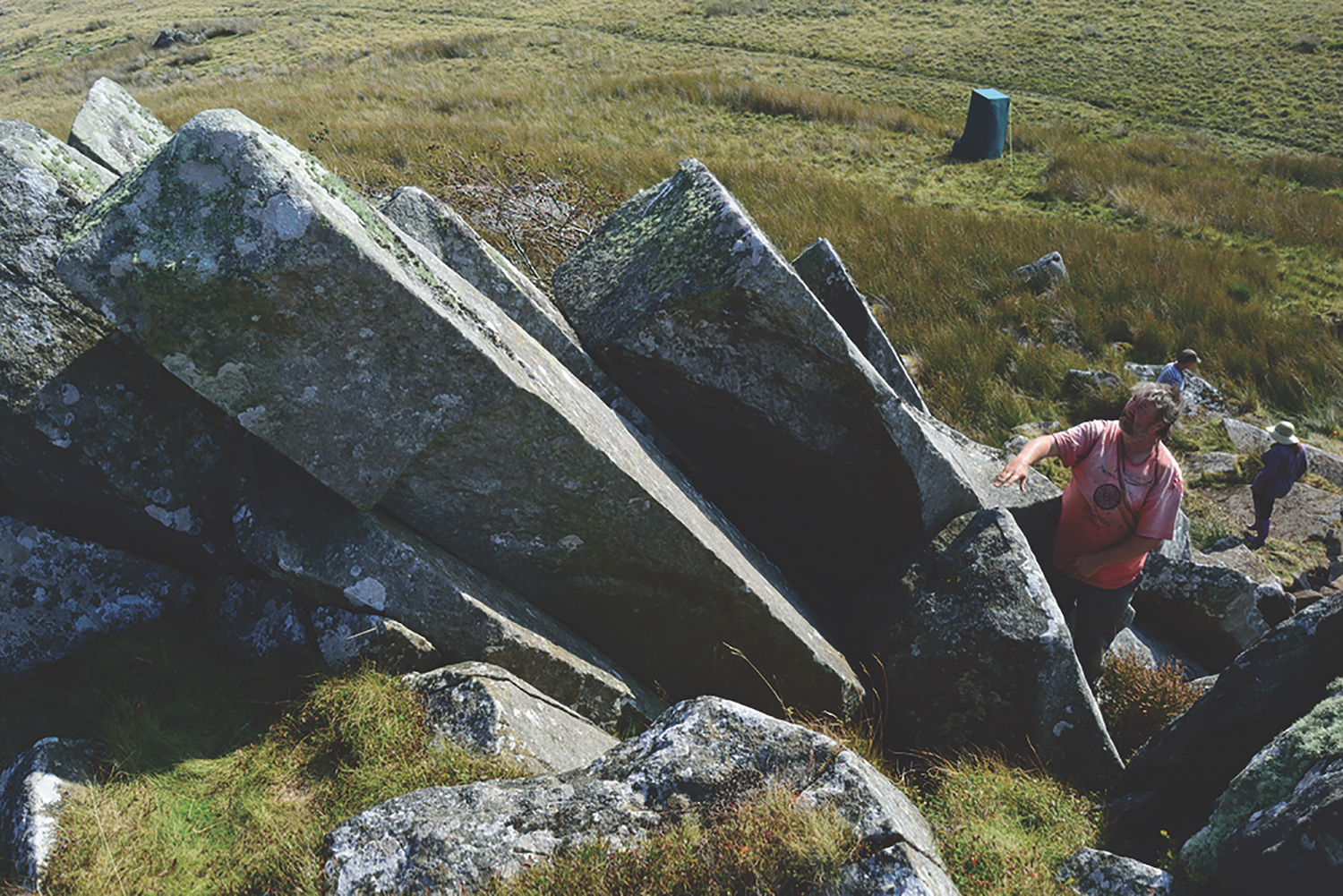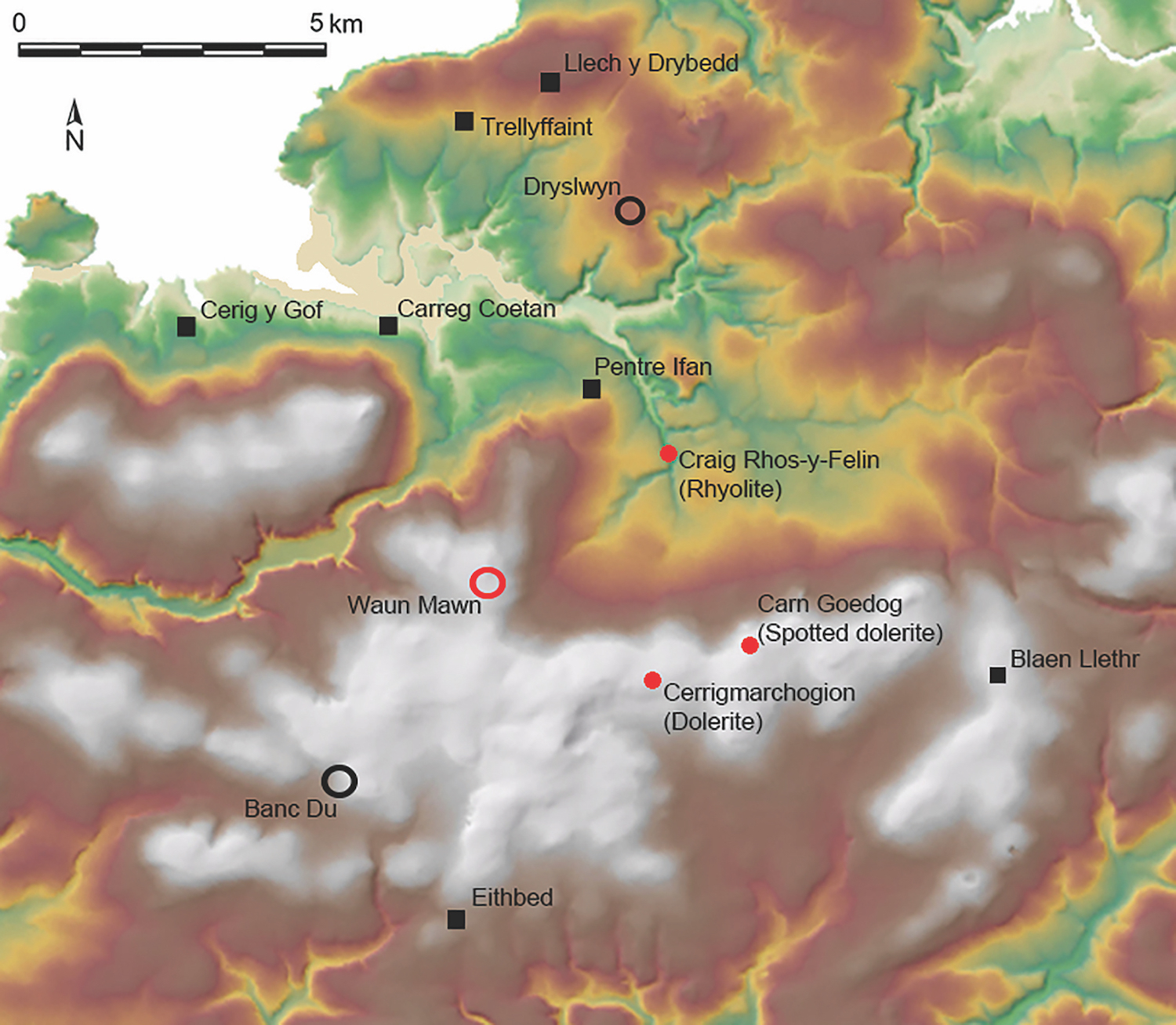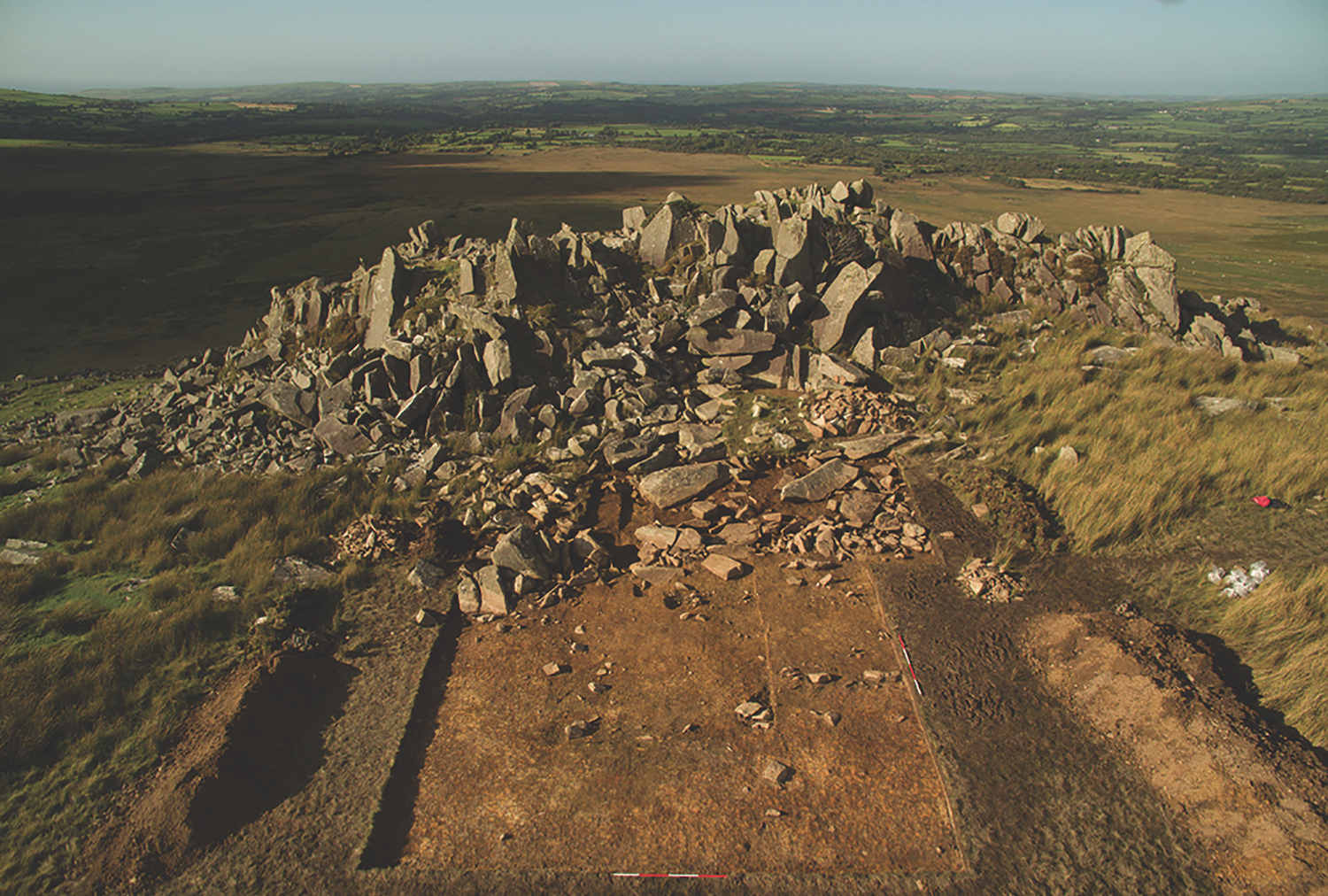Stonehenge May Have First Stood in Wales, According to Speculative Idea

The iconic megaliths that make up Stonehenge may have once stood in a temporary monument, not too far from where they were quarried in Wales, before they were transported to their final destination in Salisbury Plain, a new study suggests.
The site of this possible temporary monument, known as Banc du, is a couple of miles to the southwest of two Stonehenge quarries. Ancient humans used Banc du as a gathering place about 700 years before Stonehenge was built. But recent evidence, from radiocarbon-dated charcoal found at Banc du, suggests the site was used again around 3000 B.C.— right about the time of Stonehenge's construction.
"I think the important thing is realizing that the quarries aren't just there in isolation, that they're actually part of a larger ceremonial landscape, which includes the gathering place," study lead researcher Michael Parker Pearson, a professor at the Institute of Archaeology at the University College London, told Live Science. "There's also a concentration of Neolithic tombs in that area." [In Photos: A Walk Through Stonehenge]
Pearson and his colleagues aren't the first to suggest that the bluestones were erected in a temporary monument before researching Stonehenge. "Almost 100 years ago, the geologist H.H. Thomas speculated that the bluestones had initially been incorporated into a 'venerated stone circle' somewhere in Preseli, before making their momentous journey to Salisbury Plain," the researchers wrote in the new study.
However, this bit of burnt charcoal from the same time as Stonehenge's initial construction is currently the only piece of evidence for a temporary Stonehenge monument at Banc du. And the study's researchers, are the first to admit how speculative the new theory is. "We've got no concrete answers yet," Pearson said.

Quarrying sites
As part of the new study, Pearson and his colleagues have also been hard at work figuring out when, where and how Neolithic people quarried Stonehenge's famous bluestones.
It's widely thought that Stonehenge's huge, 25-ton (22.6 metric tons) sarsen stones were quarried at Marlborough Downs, about of 20 miles (32 kilometers) to the north of Salisbury Plain. But its 42 smaller bluestones — named for their bluish hue when wet or broken — likely came from the Preseli hills in western Wales, a whopping 140 miles (230 km) to the northwest of Salisbury Plain.
Sign up for the Live Science daily newsletter now
Get the world’s most fascinating discoveries delivered straight to your inbox.
Researchers had previously identified the two quarries that Neolithic people used to quarry the up-to- 4-ton (3.6 metric tons) bluestones: the outcrop of Carn Goedog, on the north slope of the Preseli hills, and in a valley below that, the outcrop of Craig Rhos-y-felin.
Both of these locations have naturally formed pillar-like bluestones, but how did Neolithic people chisel them from the outcrops? In the current study, Pearson and his colleagues say they have found platforms that ancient people crafted into both of the outcrops to allow improved access to the pillars, he said.
The researchers also found wedge-shaped and hammer-shaped stone tools that Neolithic people likely used to ram into cracks so they could hammer out the pillars. Ancient people likely also used wooden tools and ropes, but because both outcrops have acidic soil, these artifacts didn't preserve, Pearson said.

Thanks to charcoal found at Carn Goedog, the researchers were able to date the Neolithic activity to about 3000 B.C. At Craig Rhos-y-felin, the researchers found a trackway that led straight from a ledge, which is probably the path that Neolithic people guided the bluestones along, Pearson said. This trackway was filled with mud washed in from a nearby river, and that mud contained charcoal that also dated to about 3000 B.C., he said.
These 3000 B.C. dates unearthed at both outcrops is like a blazing key, as Stonehenge was also constructed around this time, Pearson said. [Image Gallery: Digging Up at Tomb at the Swedish Stonehenge]
No journey by sea
In the new study, Pearson and his colleagues synthesize all these pieces of evidence to re-create the possible journey of the bluestones from their origin to their final location. In this theory, after being quarried in the Preseli Hills, the pillars were transported inland to Salisbury Plain — and may have stopped at Banc du along the way. From there,it's likely that the bluestones were placed in the so-called Aubrey Holes near Stonehenge, the researchers said. The bluestones were later removed from the Aubrey Holes, and people's cremated remains were placed there instead. (A 2018 study by Pearson and colleagues found that some of these cremated people were from Wales, the origin of the bluestones.)
Then, the larger sandstone sarsen stones were added to Stonehenge about 500 years later, the researchers said.
The study is a "sound" one, said Alasdair Whittle, an emeritus professor of archaeology at Cardiff University in the U.K., who was not involved with the research. However, "the issue of a temporary or former monument somewhere in southwest Wales is very speculative, told Live Science"
The study was published online today (Feb. 19) in the journal Antiquity.
- In Photos: Ireland's Newgrange Passage Tomb and Henge
- In Photos: Stone Monument Discovered in Scotland
- 5 Strange Theories About Stonehenge
Originally published on Live Science.

Laura is the archaeology and Life's Little Mysteries editor at Live Science. She also reports on general science, including paleontology. Her work has appeared in The New York Times, Scholastic, Popular Science and Spectrum, a site on autism research. She has won multiple awards from the Society of Professional Journalists and the Washington Newspaper Publishers Association for her reporting at a weekly newspaper near Seattle. Laura holds a bachelor's degree in English literature and psychology from Washington University in St. Louis and a master's degree in science writing from NYU.










